You walk outside to tend your potato bed and….
GASP!
You find that your potato plants have fallen over!
If you’re new to growing to potatoes, your reaction might involve some panic.
Let’s take a look at all of the reasons why your potato plants are falling over out of the blue!
How to Grow Potatoes.Website is a participant in the SeedsNow Affiliate Program, a vendor of non-gmo seeds, and we are an Amazon Associate participating in the Amazon Affiliate Program. We may earn a commission from any qualifying purchases made through these affiliate links, at no cost to you, which helps to support the costs of operation of this website.
If you’d like to show your support and get amazing, competitively priced seeds that we personally use and love on our homestead, you can shop SeedsNow through our affiliate link.
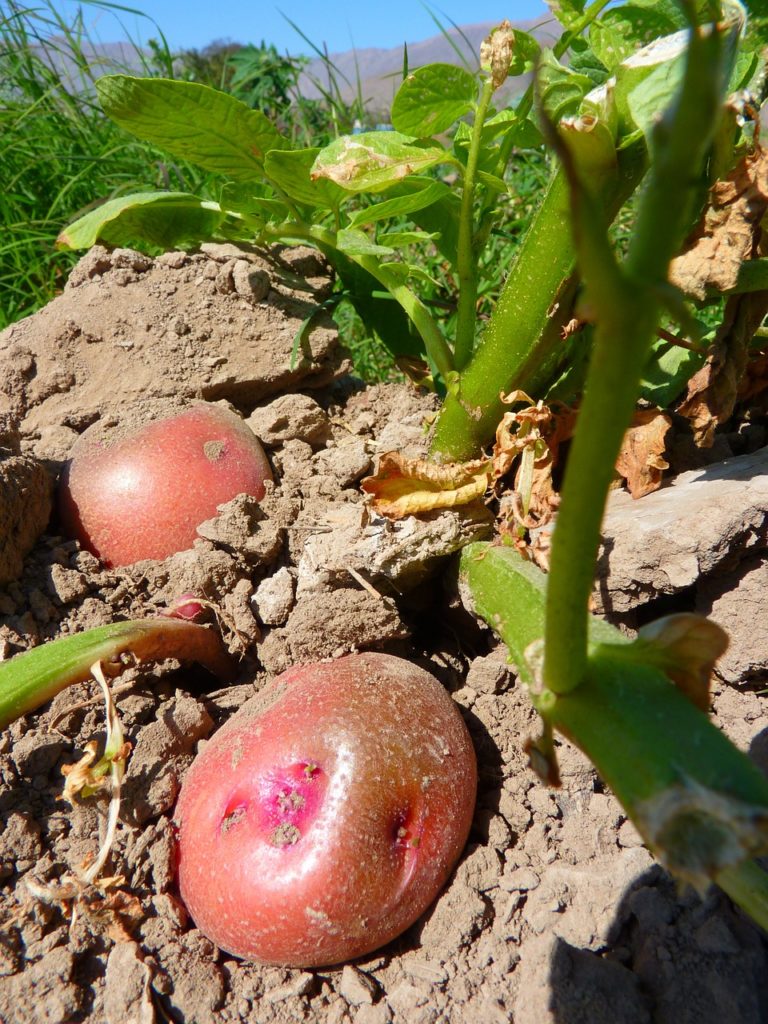
Support Your Potato Plants: Hill’em Up!
If you haven’t already hilled your potato plants, I strongly advise adding several inches of rich soil to your potato plants.
Use the dirt to support the stems, bringing them upright again.
Hilling will help to keep them upright for now, but you should be on the lookout for any more potential problems.
If you find that the potato plants have tipped over again, there may be other problems at hand.
Potato plants falling over one another without support can invite fungal infection and disease, so don’t allow them to stay down for long if possible.
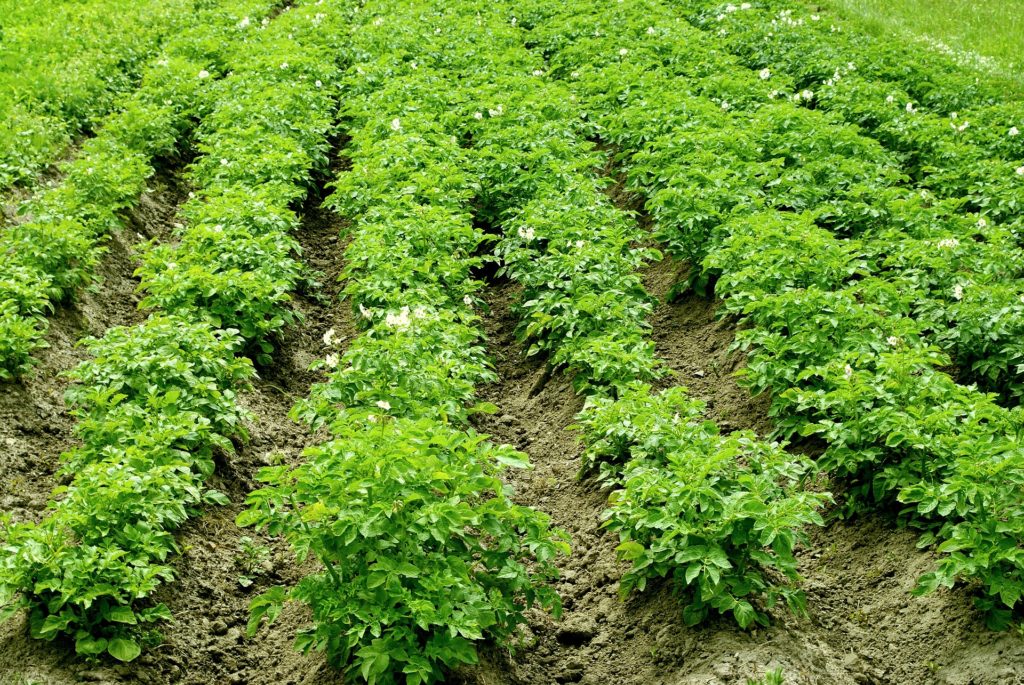
Did Bad Storms and High Winds Knock Over Your Potatoes?
Do you recall a storm moving through recently, or a particularly windy day?
If your plants fell victim to a storm, they may have fallen over due to torrential downpours or winds.
Beautiful, bushy, mature potato plants can really take a hit in high winds; if your potato plants look perfectly happy after a storm, this is likely the culprit.
The more foliage that your potato plants have, the worse the damage will be due to wind resistance.
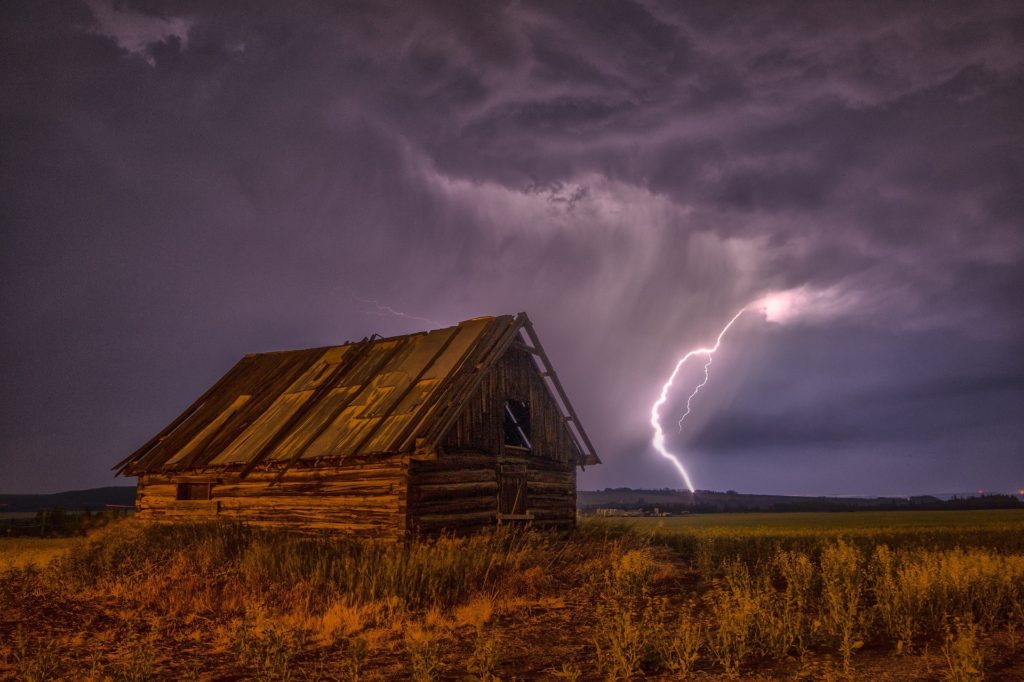
Are Your Potato Plants Leggy and Weak?
If your potato plants appear leggy and weak, they likely fell over due to some wind, wild animals, or they may have collapsed under their own weight.
Leggy plants are tall and spindly, with thin foliage. They look as if they have been stretched out– because they have!
A potato plant will become leggy if it is not receiving enough sunlight.
If the plant resides underneath trees or in a shaded area of the yard, you likely have leggy plants.
Try staking leggy plants and providing them with additional sunlight by pruning back bushes and branches.

Are You Growing Indeterminate Potatoes?
Sometimes, we use indeterminate potato varieties in our gardens. These plants may exceed the growth of your determinate varieties by quite a bit.
They are the best choice for potato towers, so they are frequently found being used for that purpose. Check this post out if you want to understand what varieties are indeterminate. If you have, for example, late season potatoes, you likely have indeterminate varieties.
Since the indeterminate varieties tend to grow taller, it makes sense that they will require more support as they grow larger. In this case, you have nothing to worry about! Their amazing growth is a great sign, and it means you are far more likely to see flowers and fruits on your plants. If your plants grow fruits, they are not edible; they are poisonous. However, it is a sign that you offered your potato plants an excellent growing environment, and they put forth the effort to flower and reproduce via seed.
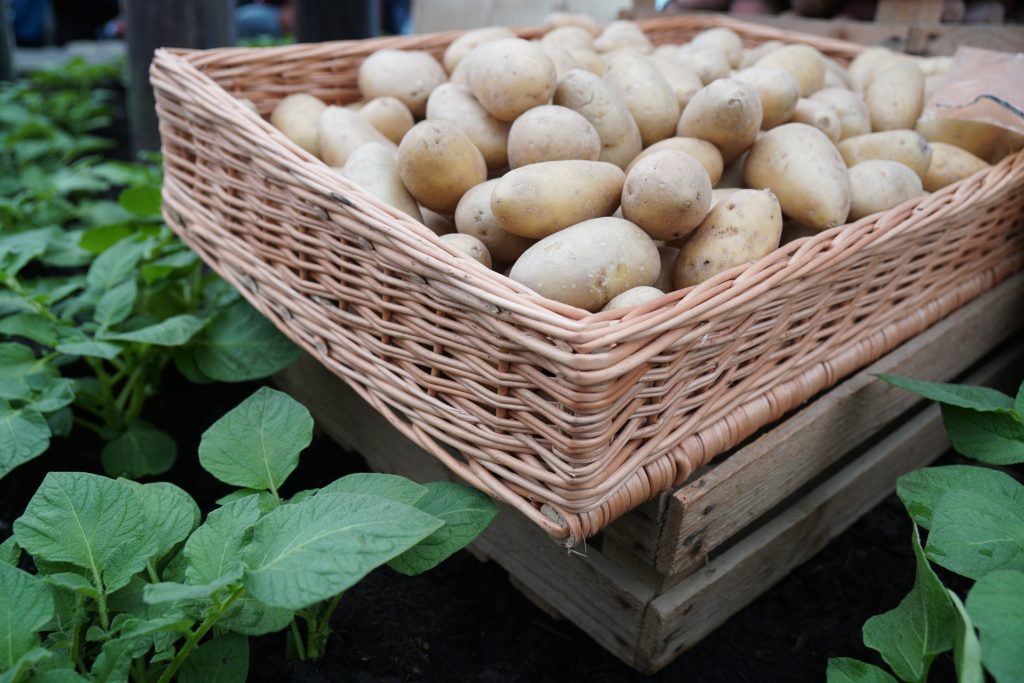
Did You Know: Potato Plants Also Fall Over When It’s Time to Harvest!
If your potato plants are fully grown and they are a few months old, you may begin to see them fall over and become yellowed.
This is because the potato plant will begin to die off once its life cycle is complete.
In other words, it’s like a timer that lets you know that your potatoes are done!
If you have potatoes dying off, cut the plants within 6″ of soil level and allow the tubers to cure underground for two weeks.
Do not water potatoes during this time, as curing needs to complete.
By leaving some of the stem behind, it’ll be easier to locate and harvest potatoes.
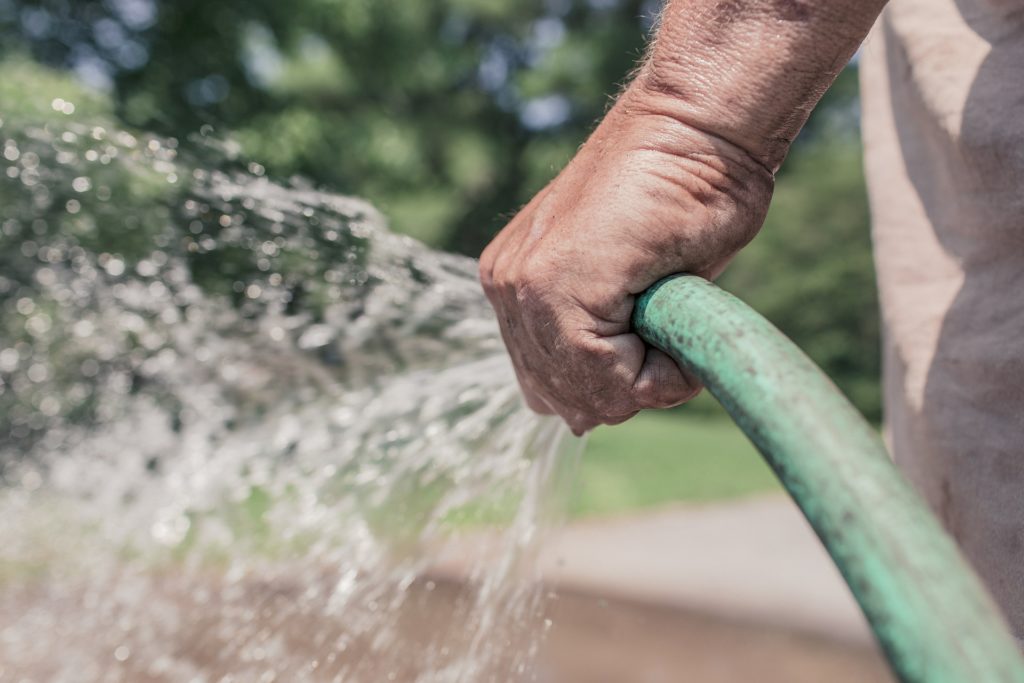
Disease & Lack of Water
If your plants have other symptoms such as wilting, yellowing, splotches, or rotting, your potato plants are either diseased or withering due to dry soil.
Water the plants at soil level during the evening, and check them for improvement the next morning.
If the plants perk up after wilting, they simply needed water; if not, you must keep investigating as there may be an infectious and contagious pathogen in the soil.
A diseased plant that has fallen over likely won’t recover; you may need to destroy the plant immediately, without composting it.
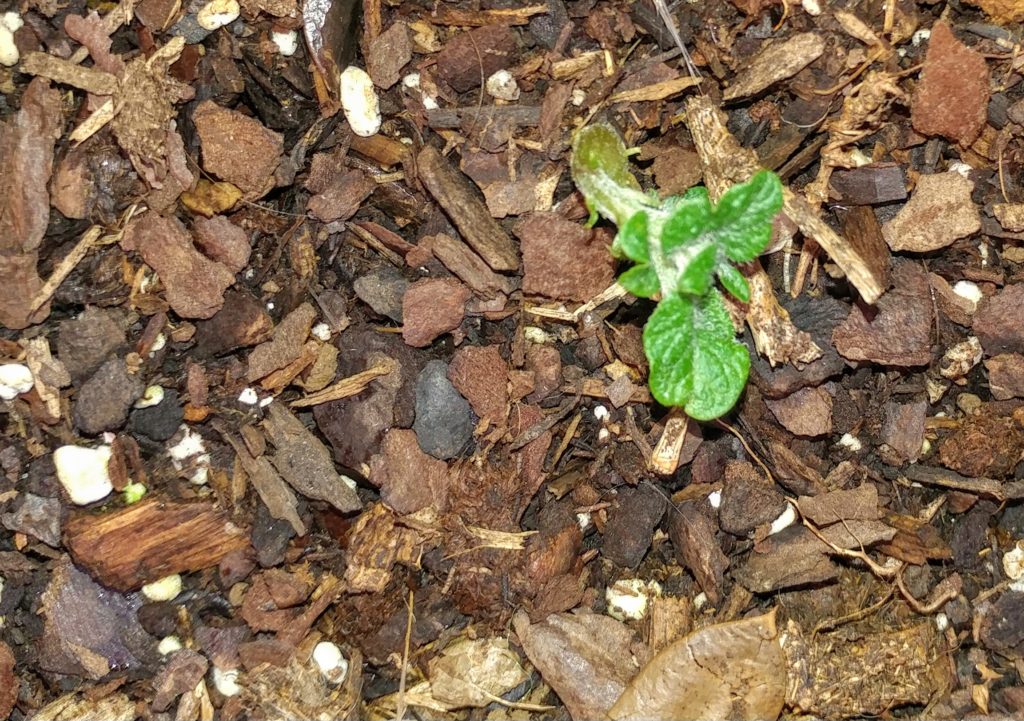
If you’d like to show your support and get amazing, competitively priced seeds that we personally use and love on our homestead, you can shop SeedsNow through our affiliate link.
I had very healthy plants,quite high but not spindly. The potatoes are not
Very big although there a lot of the . Any reason you might suggest?
I added well rotted manure and watered them weekly
I’m sorry for the late reply, Jim! Was it incredibly hot? Were your potato plants exposed to highs above 85 consistently, and lows above 70 consistently? If so (being that your comment was in September), that was the likely culprit. Potato plants “don’t produce” in hot weather, but in my experience, they will produce tiny tubers. I plant them very early, then protect young plants from frost in order to get as much growth out of them as possible before the average temperature is too high for good tuber production. They produce tubers just before flowering, and the tubers grow at/after flowering, which is when they need the protection from hot weather.